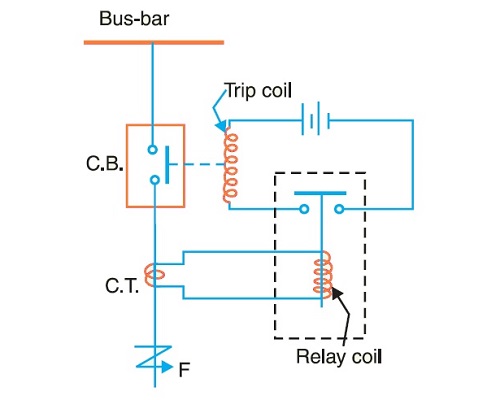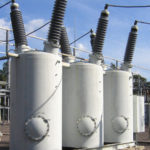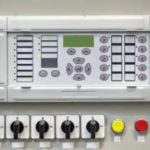What is a Protective Relay?
The protective relay was invented more than 160 years ago. During the last 60 years, it has undergone considerable change, the most obvious of which is its reduction in size.
They are compact and self-contained devices which can detect abnormal conditions. Protective relays detect the abnormal conditions in the electrical circuits by constantly measuring the electrical quantities which are different under normal and fault conditions.
The electrical quantities which may change under fault conditions are voltage, current, frequency, and phase angle. Through the changes in one or more of these quantities, the faults signal their presence, type, and location to the protective relays.
Having detected the fault, the relay operates to close the trip circuit of the breaker. This results in the opening of the breaker and disconnection of the faulty circuit.
The protective relaying is used in electrical substations to give an alarm or to cause prompt removal of any element of the power system from service when that element behaves abnormally.
The abnormal behavior of an element might cause damage or interference within the effective operation of the rest of the system. The protective relaying minimizes the damage to the equipment and interruptions to the service when an electrical failure occurs. Along with some other equipment the relays help to minimize damage and improve the service
The protective relaying scheme includes protective current transformers, voltage transformers, protective relays, time delay relays, auxiliary relays, secondary circuits, trip circuits, etc.
(Related components from WIN SOURCE)
Each component plays its own role, which is very important in the overall operation of the scheme. The protective relaying is the teamwork of all these components. The protective relaying also provides an indication of location and type of fault.
Read protection zones in the power system for more details
Relay Circuit Diagram
- The first part is the primary winding of a current transformer (C.T.) which is connected in series with the line to be protected.
- The second part consists of the secondary winding of the current transformer and circuit breaker and the relay operating coil.
- The third part is the tripping circuit which may be either Ac or DC. It consists of a source of supply, the trip coil of the circuit breaker and the relay stationary contacts.
Protective Relay Working

When a short circuit occurs at point F on the transmission line, the current flowing in the line increases to an enormous value.
This results in a heavy current flow through the relay coil, causing the relay to operate by closing its contacts.
In turn, closes the trip circuit of the breaker, making the circuit breaker open and isolating the faulty section from the rest of the system.
Requirements of Protective Relaying
The principal function of protective relaying is to cause the prompt removal front service of any element of the power system when it starts to operate in an abnormal manner or interfere with the effective operation of the rest of the system.
In order that protective relay system may perform this function satisfactorily, it should have the following qualities :
- selectivity
- speed
- sensitivity
- reliability
- simplicity
- economy
Read more about each of them at the Fundamental Characteristics and Functional Requirements of protective relaying.
Basic Protective Relays Types
Most of the relays in service on the electric power system today are of the electromechanical type.
They work on the following two main operating principles :
- Electromagnetic attraction
- Electromagnetic induction
Electromagnetic attraction relays operate by virtue of an armature being attracted to the poles of an electromagnet or a plunger being drawn into a solenoid. Such relays may be actuated by d.c. or a.c. quantities.
Electromagnetic induction relays operate on the principle of the induction motor and are widely used for protective relaying purposes involving a.c. quantities. They are not used with dc quantities owing to the principle of operation.
Functions of Protective Relays
The various functions of protective relaying are to:
- The prompt removal of the component which is behaving abnormally by closing the trip circuit of the circuit breaker or to sound an alarm.
- Disconnect the abnormally operating part so as to avoid the damage or interference within the effective operation of the rest of the system.
- Prevent the subsequent faults by disconnecting the abnormally operating part.
- Disconnect the faulty part as quickly as possible so as to minimize the damage to the faulty part itself. For example, if there is a winding fault in a machine and if it persists for a long time then there is a possibility of the damage of the entire winding. As against this, if it is disconnected quickly then only a few coils may get damaged instead of the entire winding.
- Restrict the spreading of the effect of the fault causing the least interference to the rest of the healthy system. Thus by disconnecting the faulty part, the fault effects get localized.
- To improve system performance, system reliability, system stability, and service continuity.
The faults cannot be completely avoided but can be minimized.
Thus the protective relaying plays an important role in sensing the faults, minimizing the effects of faults and minimizing the damage due to the faults.








Good explain but give more diagrams please
Thanks for the wonderful notes
This is well explained with clear diagrams. Easy to comprehend both for students and practicing professionals.